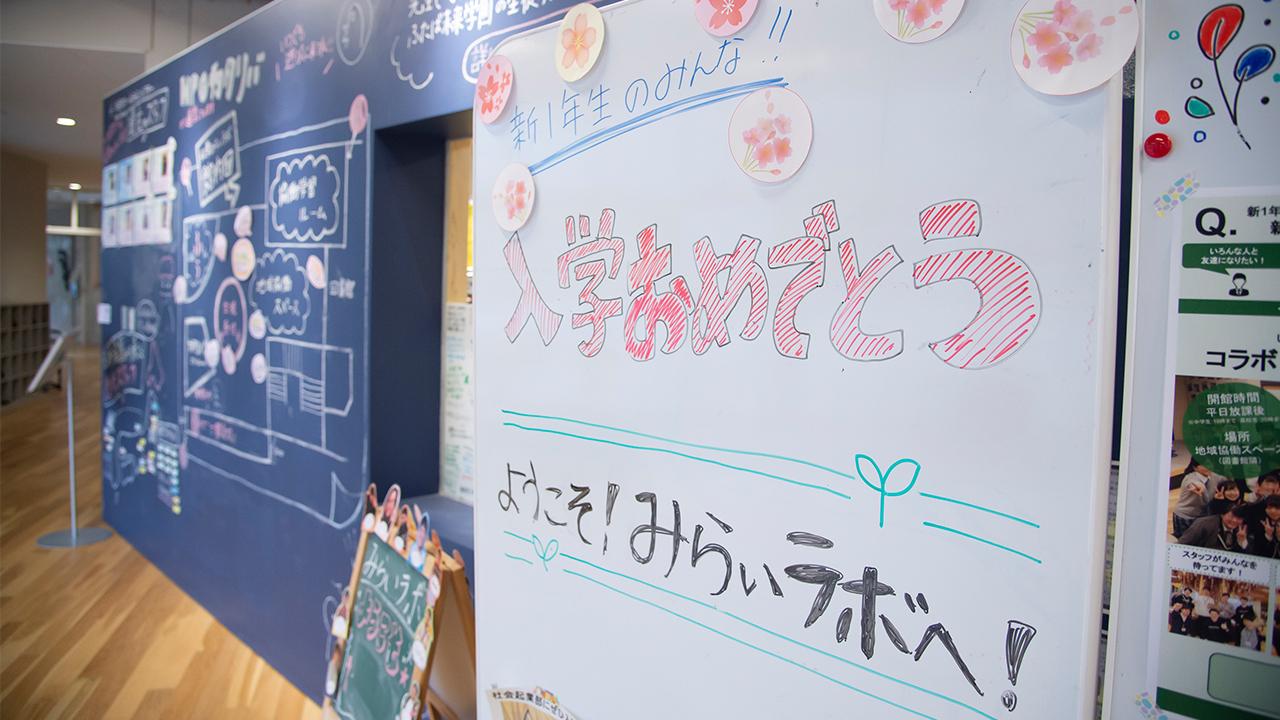
Established in 2015 after the Great East Japan Earthquake, Futaba Future School in Fukushima provides students many unique and advanced programs based on its mission to nurture talents who can pioneer the future. Masanori Kuwata, Toyota's chief HR executive, visited the school to study its initiatives.

“Non-temporary support” is how Toyota describes its commitment to the Tohoku region ever since the devastating Great East Japan Earthquake in 2011. Each year the region is visited by President Akio Toyoda, but this spring, as it marks the 10th anniversary from the earthquake, many other Toyota executive officers visited Tohoku.
This time it was the turn of Chief Human Resources Officer (CHRO) Masanori Kuwata, who visited Futaba Future School in Fukushima Prefecture. As the person responsible for human resources development at Toyota, what did CHRO Kuwata feel and notice from his visit to the frontlines of education in Fukushima? He was accompanied by Toyota Times reporter Kyonosuke Morita, who reported on the visit.
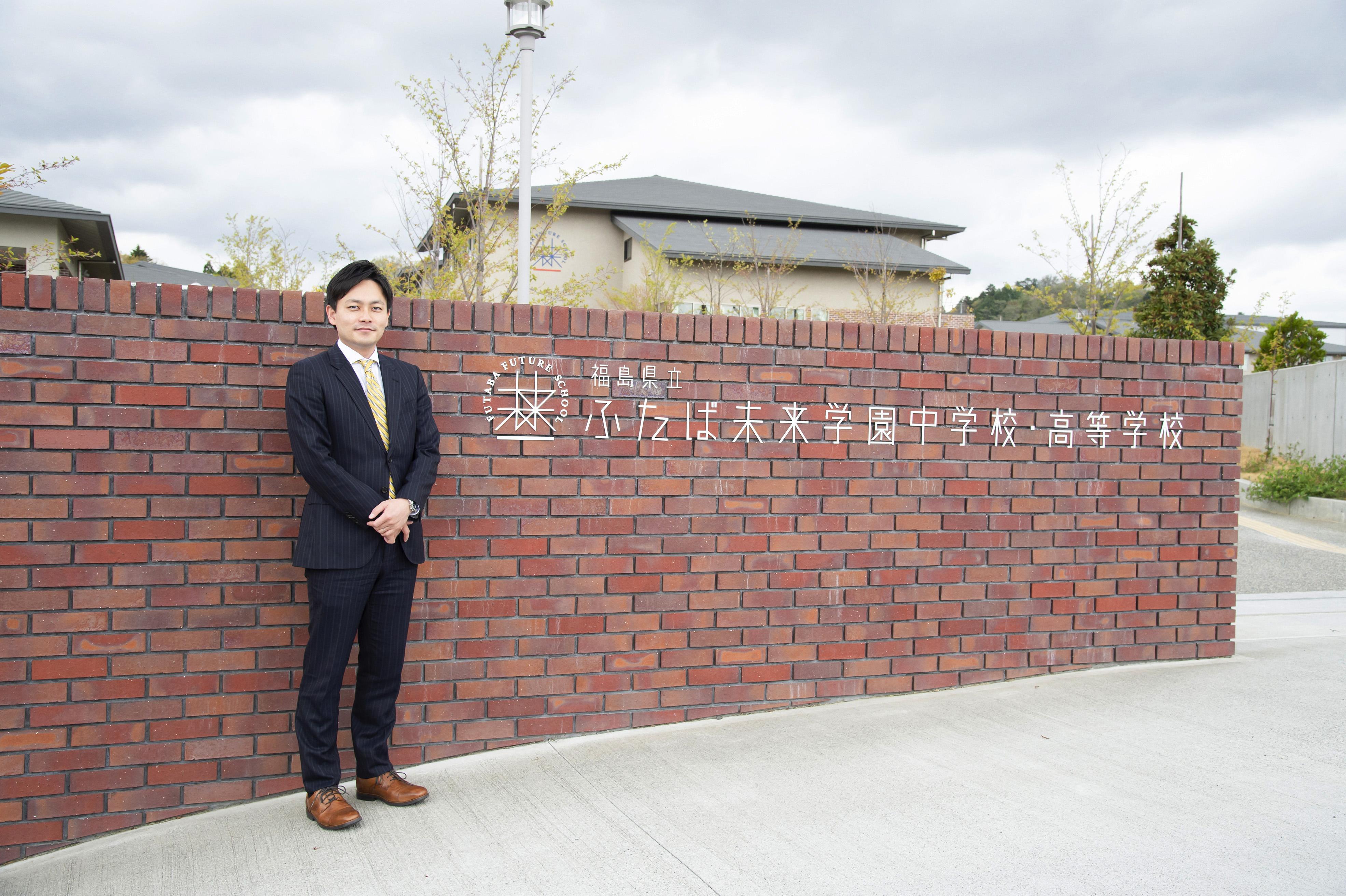
HR development unique to a region facing many challenges
Local communities in Fukushima Prefecture face various challenges, including a decreasing birthrate and aging population, depopulation, and industrial decline. These challenges were further exacerbated by the earthquake, tsunami and nuclear power plant accident.
With a population of just under 6,000, such problems were deep-rooted in the district of Futaba. The impact of the disaster meant that none of the five prefectural high schools could reopen in their original premises and from fiscal 2015 they stopped accepting student applications. For four years Futaba faced a situation in which there was not a single high school in the district.
It was in the face of such circumstances that Futaba Future School, operated by the prefecture, opened its doors to pupils. The key concept behind the establishment of this combined junior high and high school is that talent development is the critical key to overcoming adversity and realizing reconstruction.
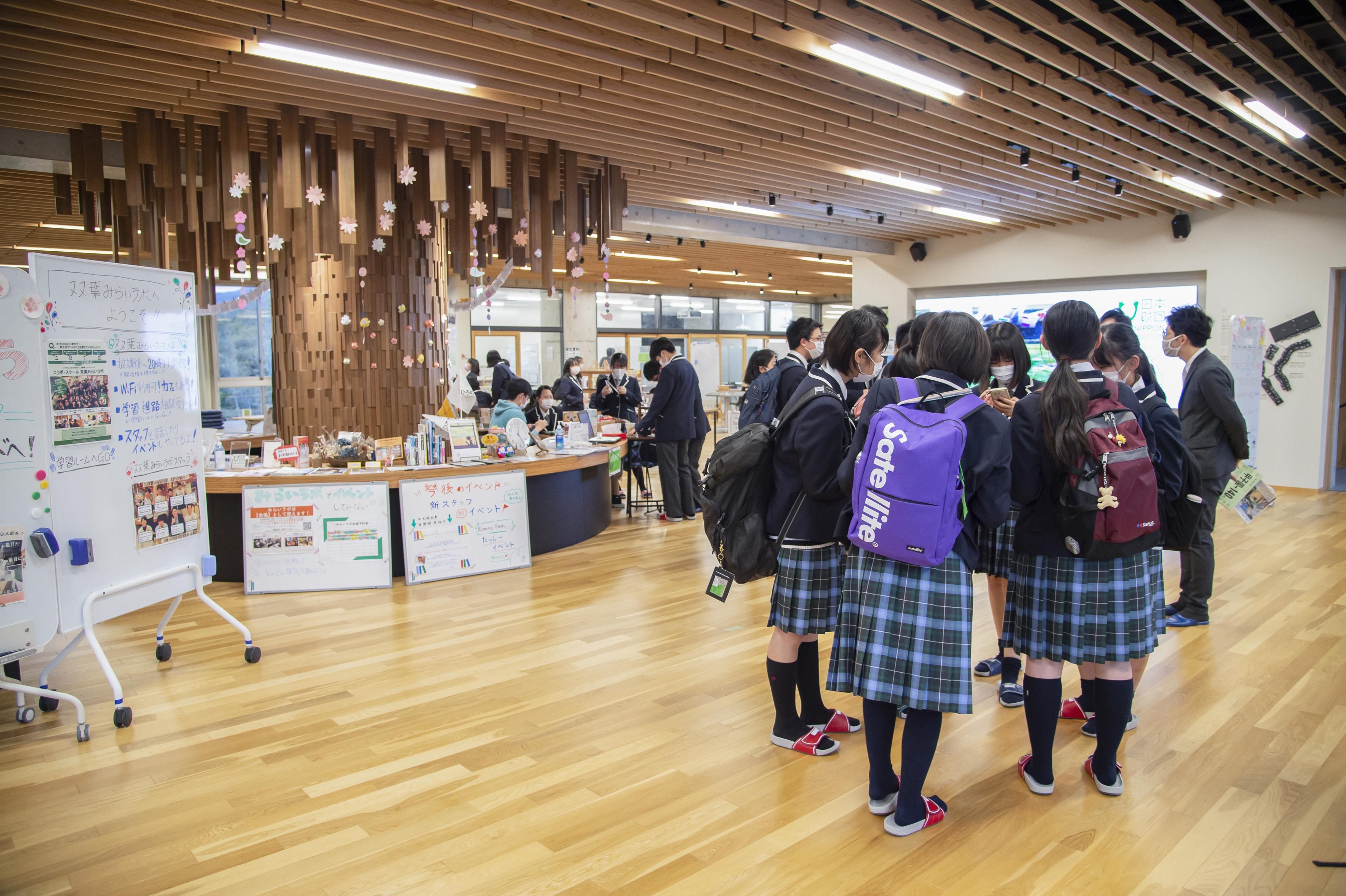
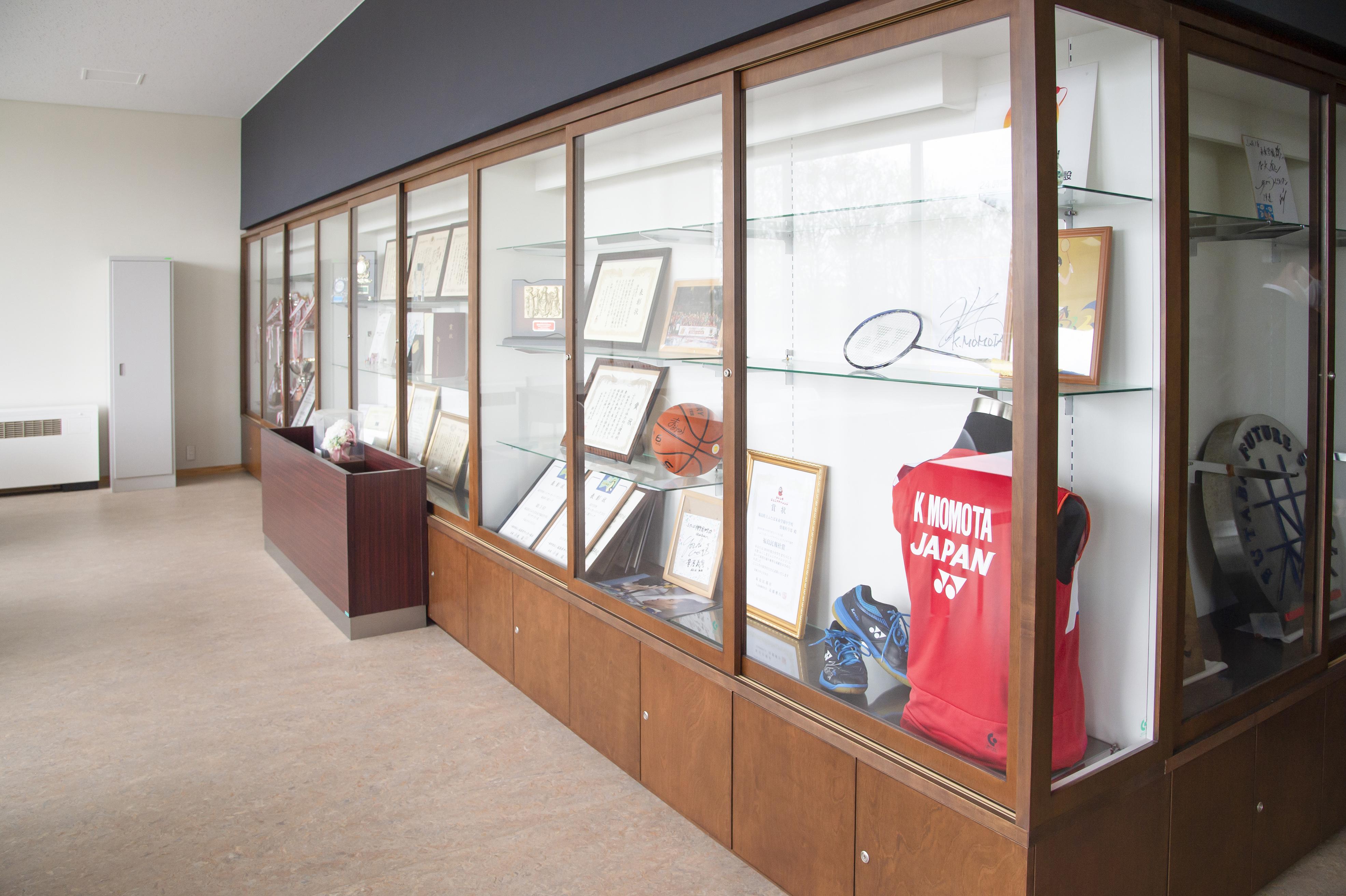
When Toyota Motor East Japan (TMEJ) Chairman of the Board Takeshi Shirane visited the school on a reconstruction-related fact-finding mission, he was impressed by its educational policy. Since then TMEJ has recruited graduates from the school each year. It was these continuing links with Toyota that led to this latest visit.
The school’s song is also distinctive. It was produced by Yasushi Akimoto, with lyrics by Shuntaro Tanikawa, which begin, “Manabu, oboeru, mi ni tsukeru, fu ni ochiru made kangaeru” (“Learn, memorize, acquire, and think until things make sense”). The school’s motto is also a powerful one: “Be Innovators.” So what kind of classes take place here?
To kick off the visit, Kuwata was shown around by school Principal Hideki Yaginuma. The content of the education that the two discussed was a constant series of surprises.
Students negotiate with companies to sell products online
First on the tour was a free space known as “Futaba Future Lab.” Members of the public can enter this space freely, and for students it acts as a collaborative place to facilitate interactions with local people.
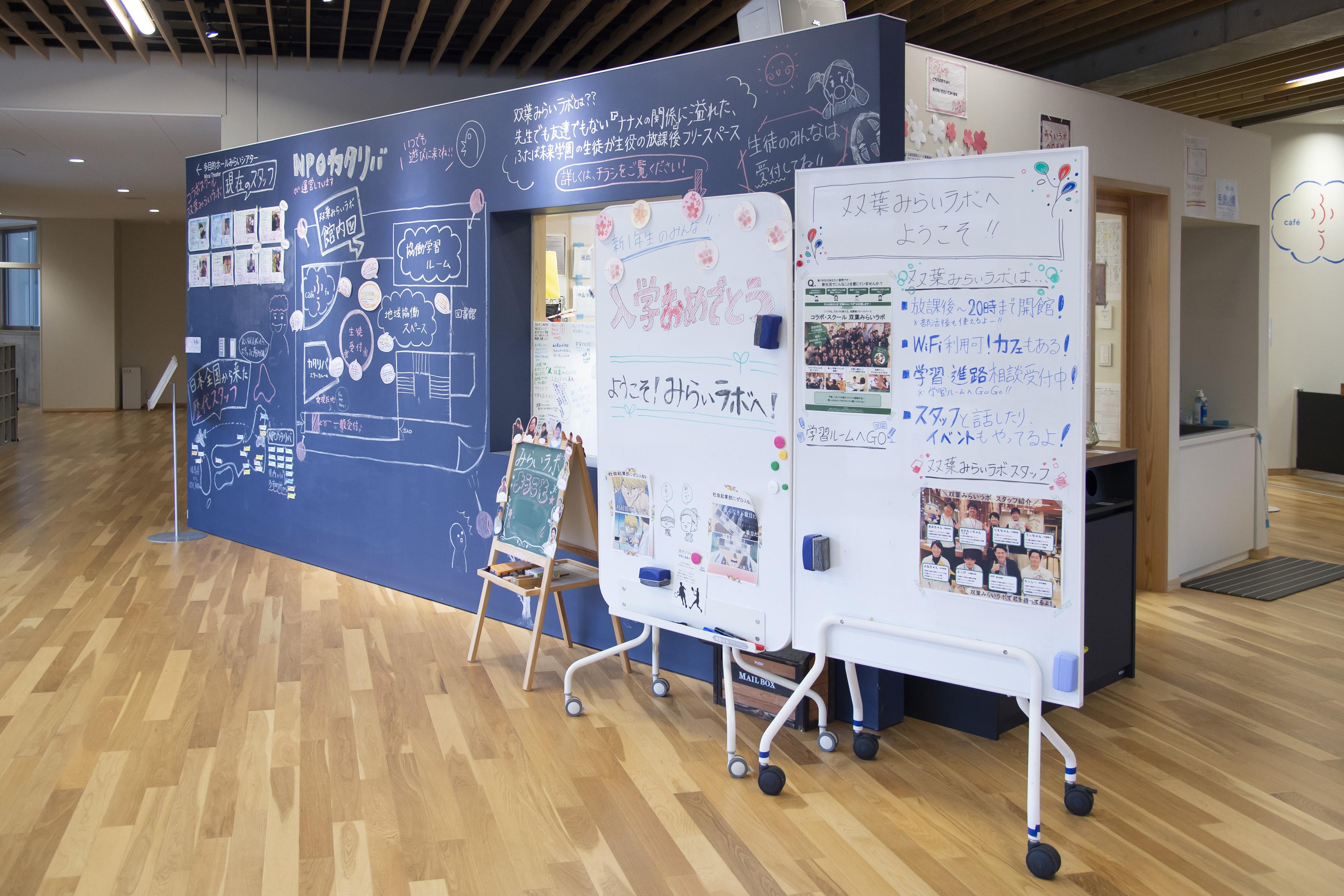
Here there is also a café that is run by the café team of the social entrepreneurship club, one of the school’s club activities. The café sells cakes made using local specialty products and has developed its own original coffee blend. Faced with the COVID-19 pandemic the café also now provides online shopping services and even promotes itself via social media.
The purpose in running the café is “knowing, communicating with, and enlivening the community.” Students learning about their own town and interacting with the local residents is a pillar of education at the school.
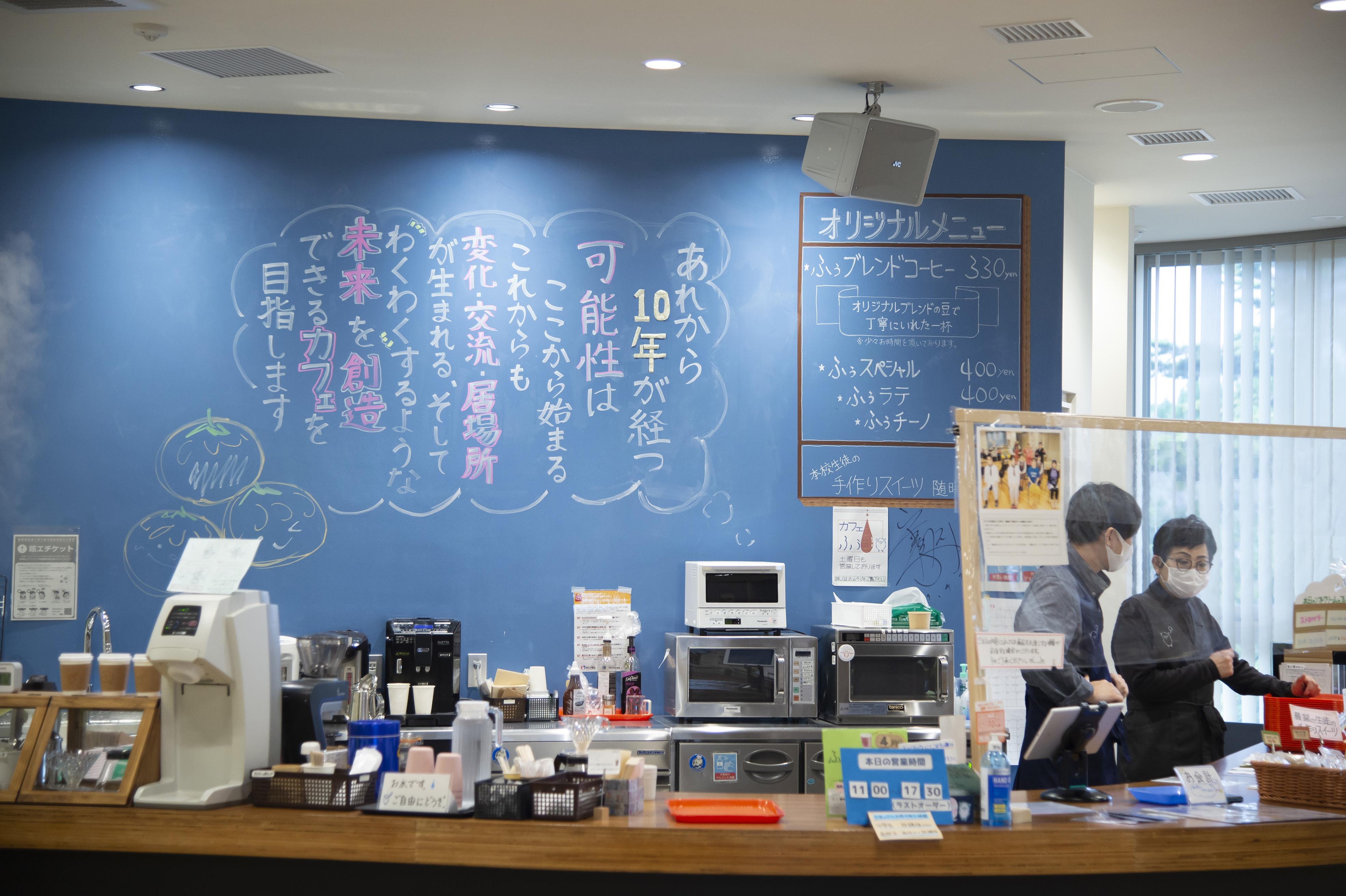
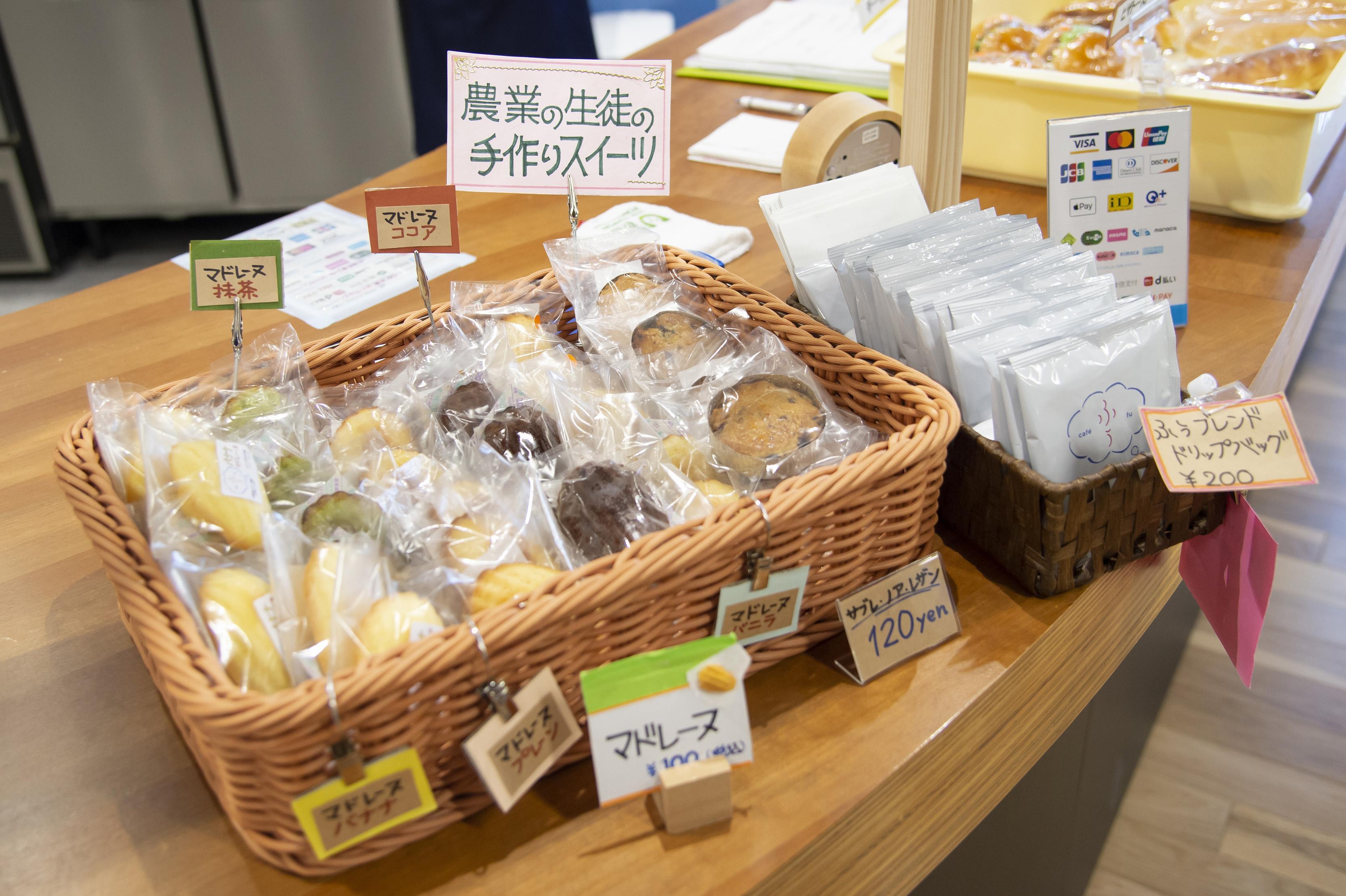
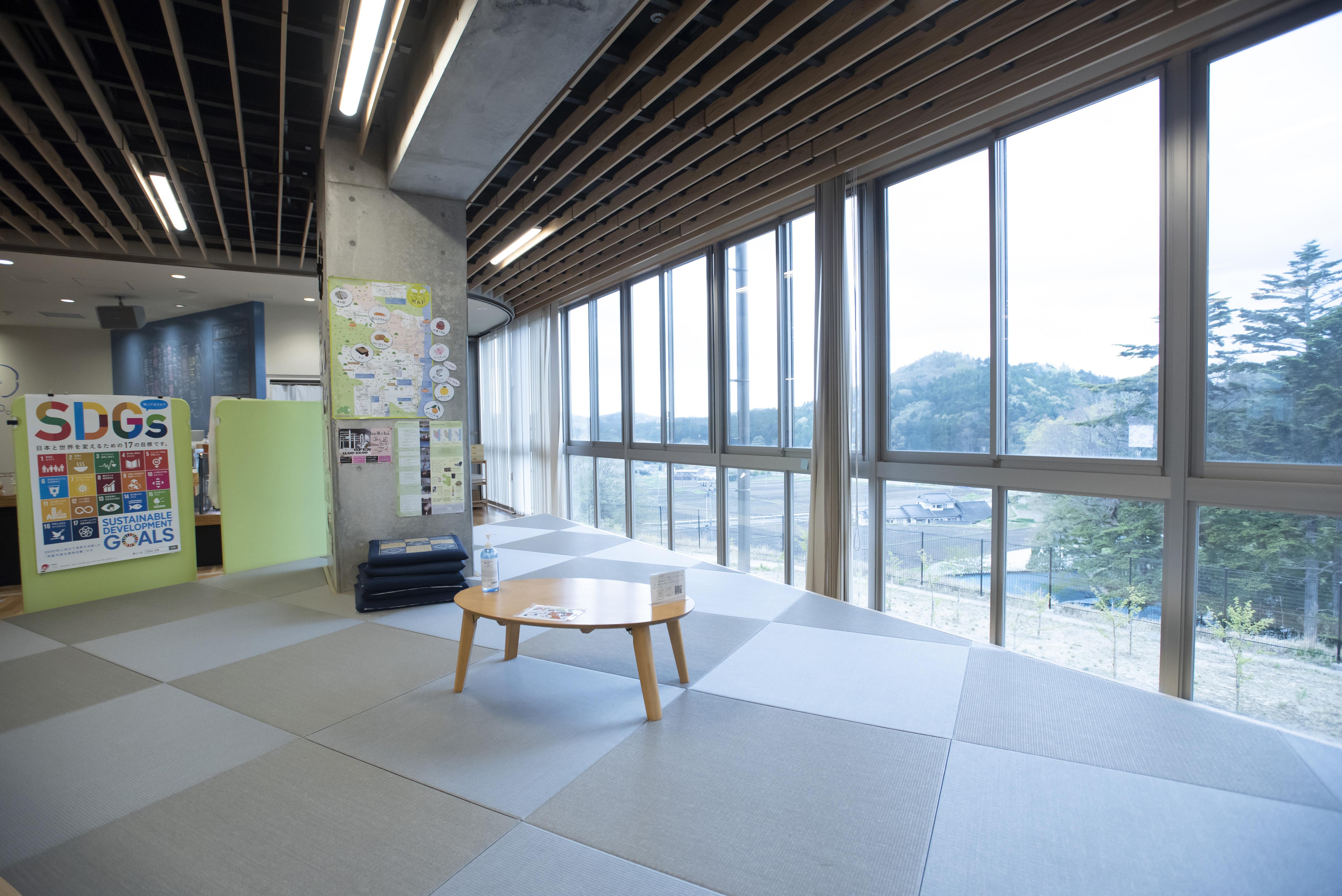
This school offers a unique educational program known as “future creativity quest.” At the root of this program are the various social challenges being faced by the local community.
Students are divided into six future creative quest seminars, including on subjects like nuclear disaster prevention and renewable energy, and are encouraged to seek out challenges by themselves and devise solutions together with experts and local people. Activities do not end there, instead moving through to implementation, including the holding of events or the production of products. There are even outreach activities and recommendations made both in Japan and overseas.
For example, as part of efforts to boost the image of Futaba district, students engaged in negotiations with the fisheries cooperative and companies, working to develop and sell products made using locally produced salmon. The students also devised a recipe, created advertisements and promoted their products themselves.
In addition, as a means of getting students to think about challenges facing the community as issues directly affecting them, such as reconstruction and the declining birthrate and aging population, a “local community exchange program” has also been implemented, with high school students from all over Japan being invited to participate in a program that combines tours of Futaba district, homestays and discussions among students of the same age.
Also, in an example that the school principal says even surprised him, the students planted and grew vegetables in an abandoned field and planned their own farmers’ market. To finance their plans, they used crowd funding, and even called the media to the school for a press conference.
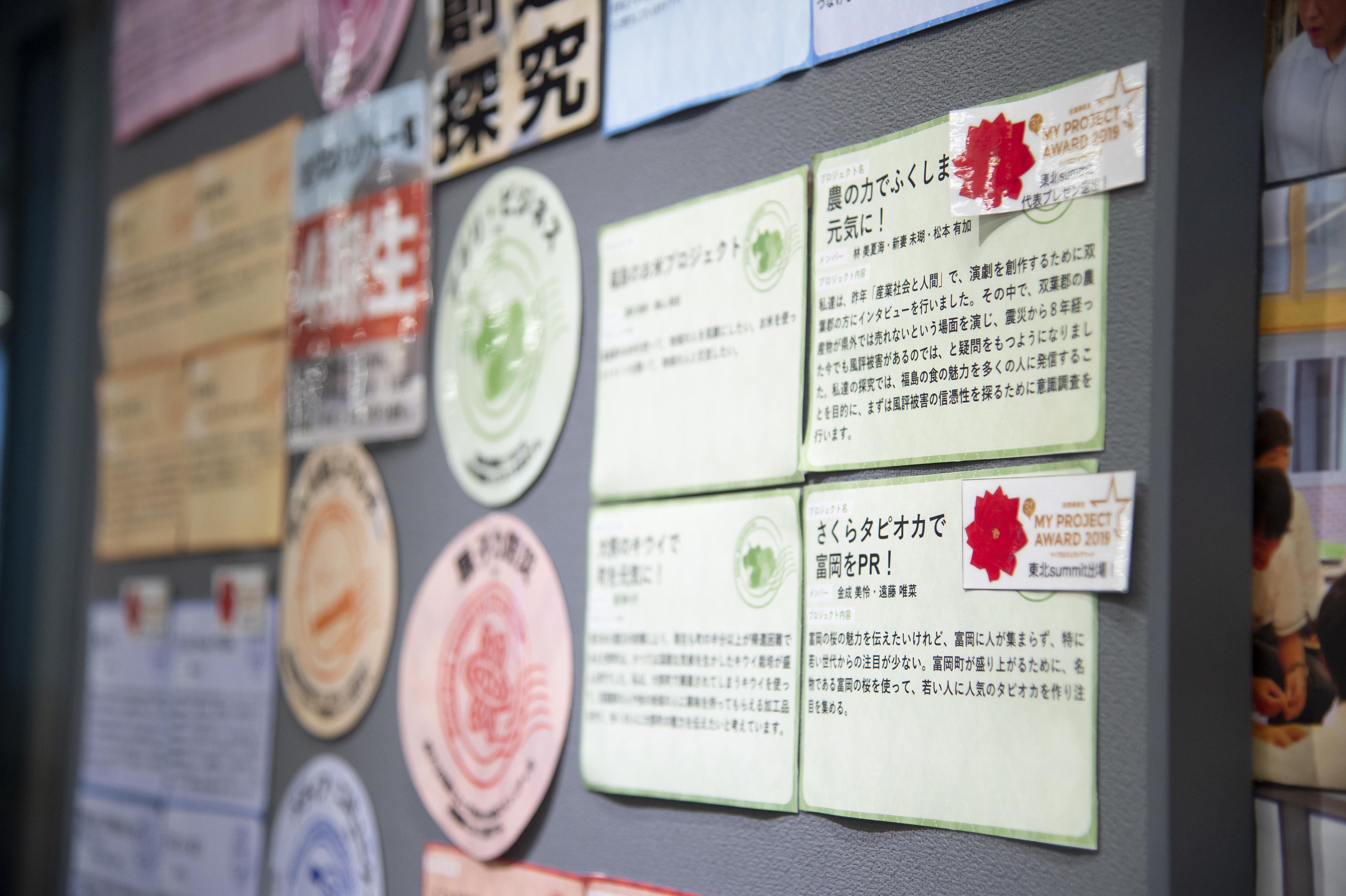
Activities are not just limited to Japan. The students developed their own ideas for solving local challenges and proposed a series of recommendations to United Nations Headquarters in New York for realizing a sustainable society. During the course of an eight-day stay in New York, the students gave presentations to local university students and also engaged in various discussions.
From discovering issues to implementing solutions, students work independently and accumulate experience in working together with the community. Across the entire wall of the Futaba Future Lab are many posters and details of the various initiatives implemented by students. Kuwata could not disguise his surprise at all these efforts, saying, “There is no other school like this,” in response to which the principal noted, “What we are aiming to do is revitalize the local community and further boost reconstruction efforts.”
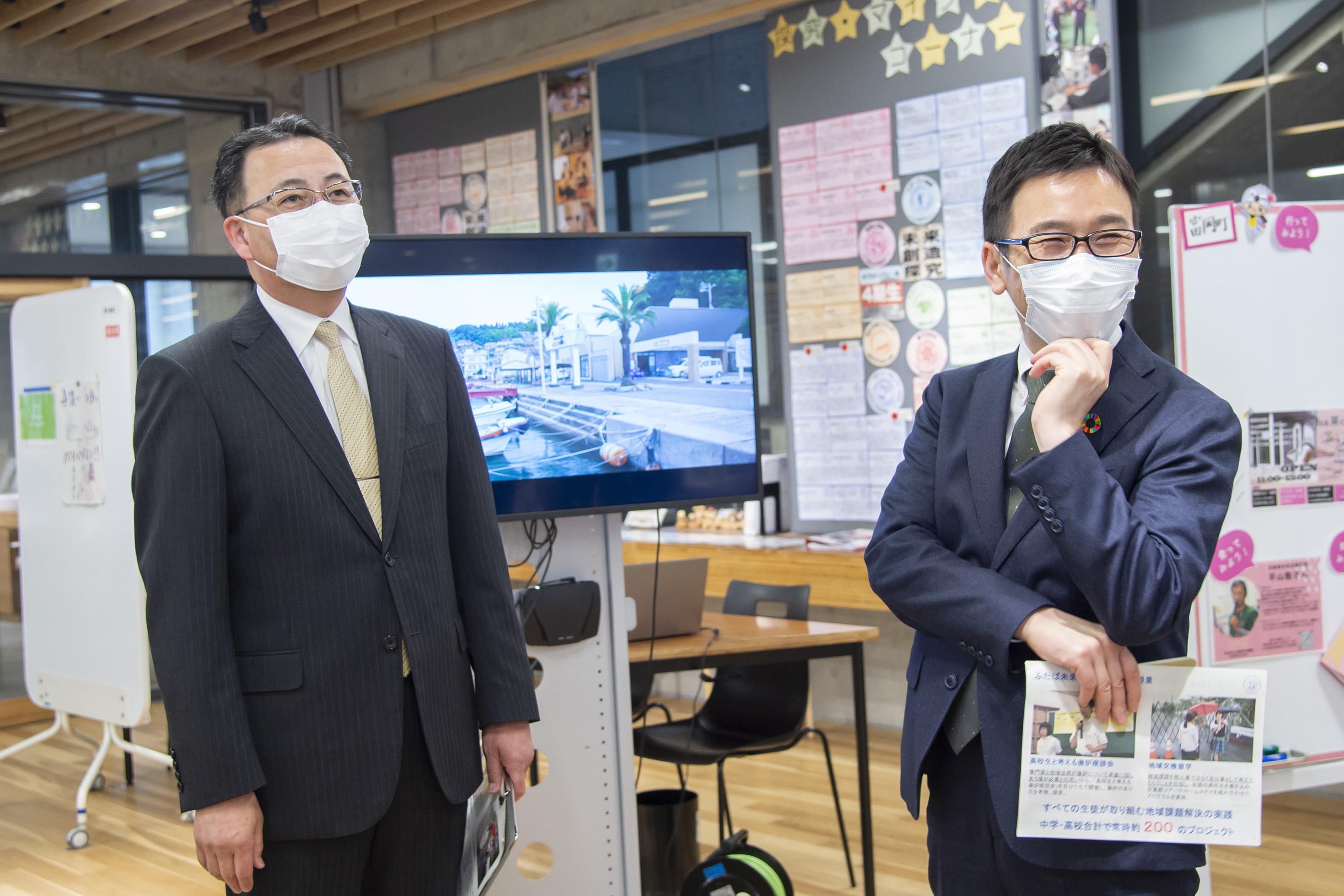
What is the secret to getting students to work independently?
“I was surprised to see all the students working independently and wanting to work. Why are the students here capable of applying themselves so quickly and independently to a task?” This was the question asked by Kuwata, and the school principal answered it in this way.
“It is the students themselves who find their own targets and the teachers simply provide support. In contrast to having been given something to do, the students are able to work quickly and independently because they’ve discovered something on their own. It may have something to do with the various troubles they have faced (relating to the earthquake and nuclear accident), but there are many students here who learn with a goal-oriented purpose.”
The principal also noted that there is another important element that is vital for promoting initiatives to deal with social challenges. As he put it himself, “What is needed is not just the cooperation of the teachers, but also the people in the local community.”
The principal pointed out that when they join the school there are many students who have very little interest in studying. However, once they get to know about the realities of the local communities through the future creative quest seminars, their goal-oriented purpose is enhanced by being able to see clearly for themselves the challenges being faced by the town they call home. There is a clear sense that this cycle is a critical element of the future creative quest concept.
There have also been changes to school trips necessitated by the COVID-19 pandemic. As trips to distant locations are no longer possible, the students have instead been visiting local areas within Fukushima Prefecture, and in particular communities that were severely affected by the earthquake and nuclear accident. Some students were surprised to see steel barricades still in place. As they were just young elementary school students at the time of the disaster, many students’ memories of that time are fading.
Neither is it just the students who have such experiences. One of the first things that teachers who have transferred to Futaba Future School do is go out on a training exercise to see for themselves the affected areas. Mr. Ota, a teacher who joined the school last year said, “Many of my colleagues lived in these disaster-affected areas, and I cried (to see these places once again).”
Students and teachers alike therefore have a heightened sense of “wanting to be of use to the community,” which moves them to work together with townspeople in facing local challenges. Hearing about this, Kuwata commented, “People who have a desire to engage in self-improvement are strong and resilient.” Toyota also has a concept of genchi genbutsu (going to the source to get the facts), but at Futaba Future School, people are putting this concept into practice from high school age.
In today’s world high school students are all digitally literate. The principal points out that this is the reason why they are encouraged to get out of the classroom and visit the town.
“It’s impossible to realize or appreciate how challenging industrial work can be or how passionate people are from an internet screen. By seeing and feeling the reality for themselves, students come to think that industry is really quite cool.” The principal added, “If there had been a school like this when I was young, I would have wanted to attend it,” to which Kuwata nodded vigorously in agreement.

Even in normal classes students are encouraged to think independently.
One of the ways this is achieved is through full-class discussions on issues that don’t have a definitive answer. Letting the students engage in full-class discussions in this way helps them lose their inhibitions about expressing their own opinions. There is a definite sense that in many situations the school is making efforts to encourage students to perceive issues and challenges as their own, rather than someone else’s problem.
Reconstruction does not mean putting things back to how they used to be
Principal Yaginuma says that he will never forget the words of one female student: “Reconstruction is not putting things back to how they used to be. It is about getting people to know and understand the town.”
Although the disaster did indeed cause immense damage, it certainly did not set everything back to zero. Highlighting and promoting the attractions of Fukushima is a way to gain the support and engagement of many people, and this is what constitutes reconstruction in a very real sense, and what leads to new growth.
At the entrance and graduation ceremonies at Futaba Future School the old school flags of the five high schools that closed after the disaster are flown. It seems as if a new future is being born by carrying forward the history of each of these schools. The starting point for education at Futaba Future School is learning about the town in which the students all live, and it is firmly linked to “reconstruction from disaster.”
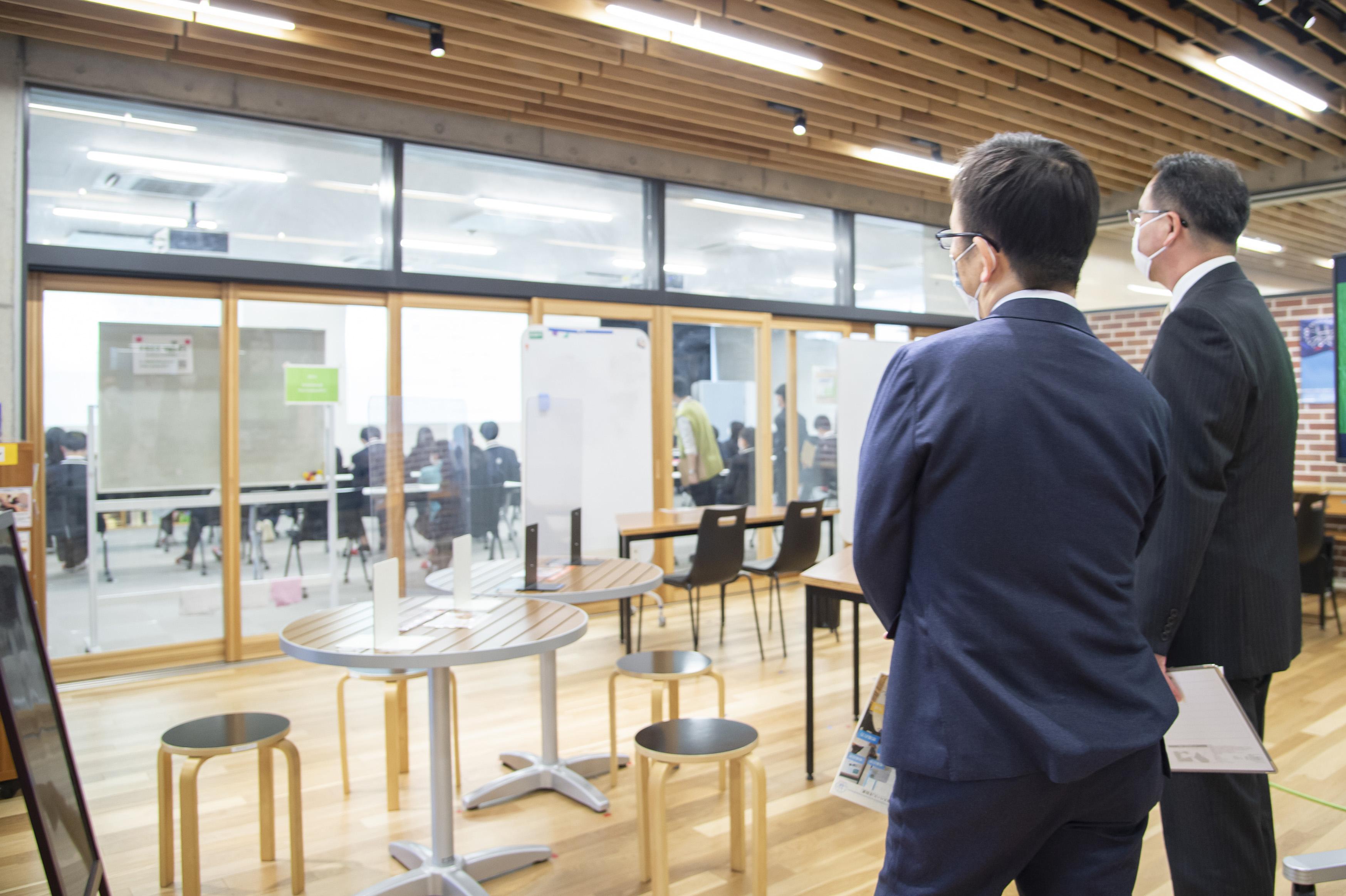
While at the school Kuwata participated in a class and heard presentations from students. Saying with a hint of embarrassment, “It’s been 35 years since I sat behind a school desk,” Kuwata listened to the students’ presentations.
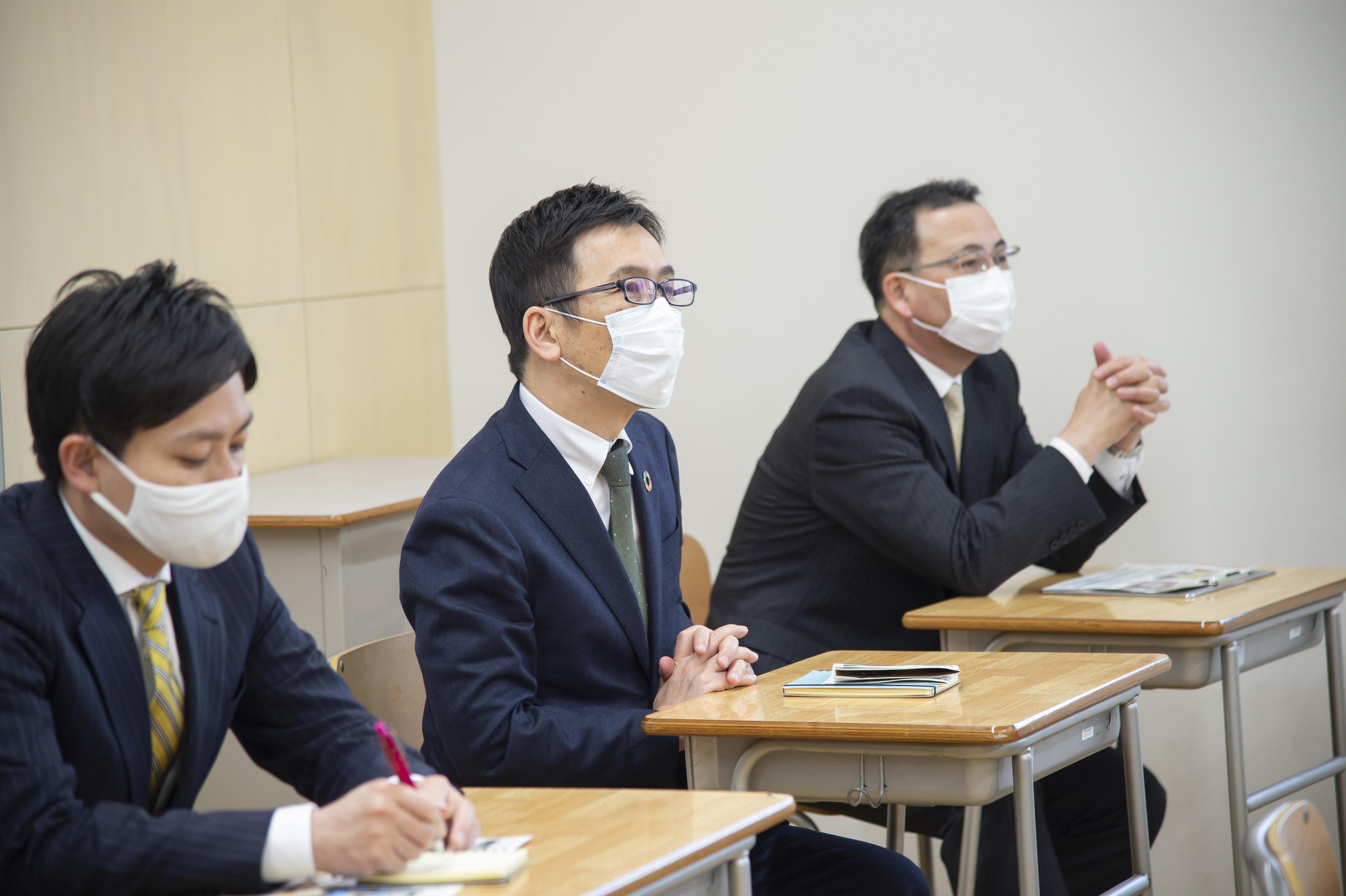
In a role reversal, it was Kuwata, the principal and the reporter who were sitting quietly behind their desks, while the students gave their presentations clearly and lucidly, albeit looking a little nervous. When the presentations were over it was actually the class teacher who said, “That was nerve-wrecking!”
Toyota is finished unless it can harness the power of young people
At the final part of the visit a dialogue was held between Kuwata and three students.
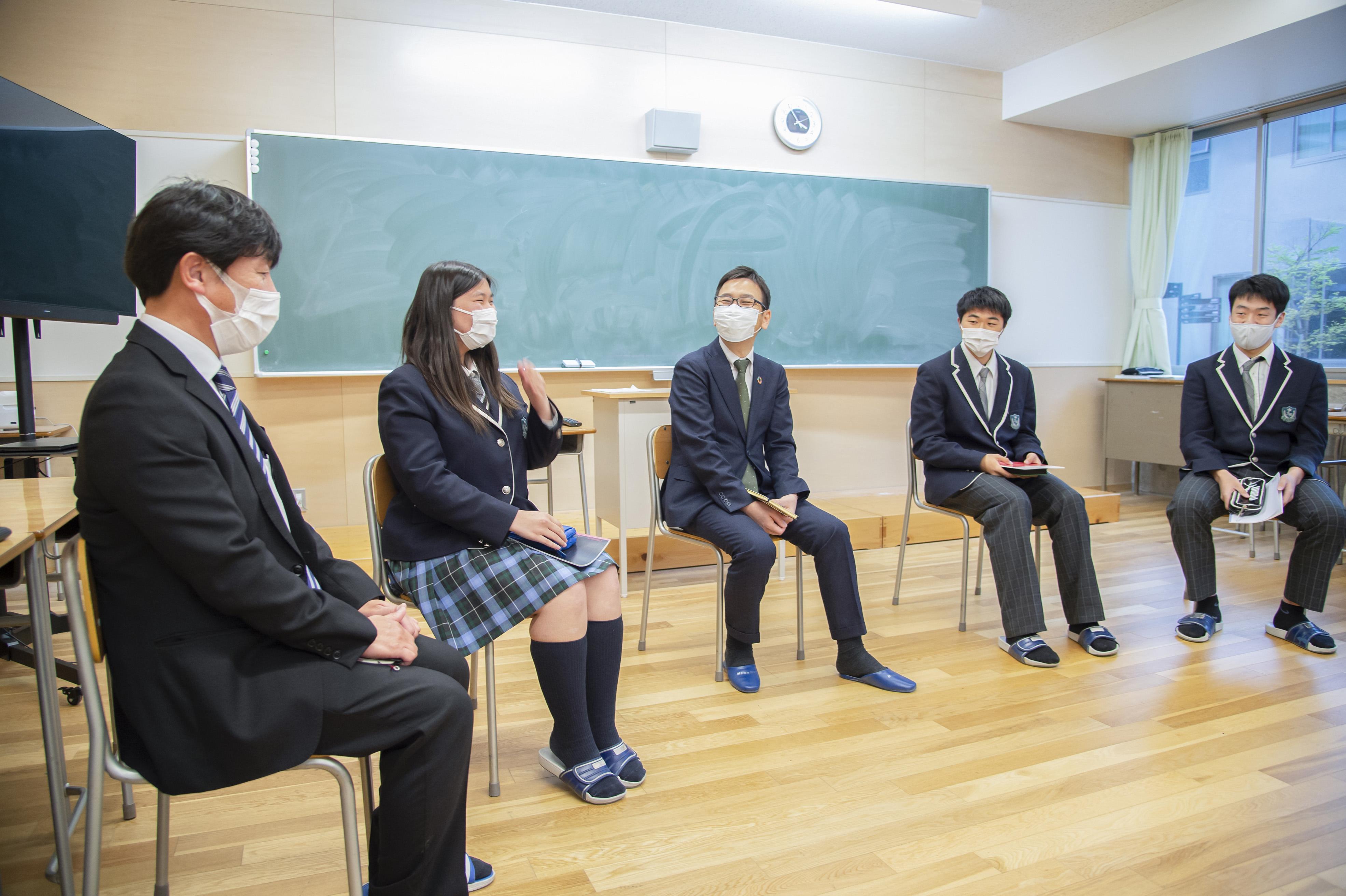
The students talked about how they had changed since entering the school. Anna Kida smiled as she said, “Before entering the school I wanted to get involved in the manufacturing of Nanbu Tekki ironware. However, I have been able to experience so much at school it has broadened my horizons to the extent that I am no longer sure what I want to do in the future!”
Minato Shiga said, “As I was a first grader in elementary school when the disaster struck, I can’t really remember what the town was like before. That is why I have asked my parents and grandmother about it many times. It was thanks to hearing their stories that made me want to continue to live here and be determined to find a job in the reconstruction-related sector. This feeling became even stronger when I participated in the future creativity quest activities.”
Yuta Sakamoto noted, “My family runs a window and glazing store and I am also interested in vehicle maintenance, so I would like a job in engineering.” Encouraged by his teacher, he added, “I hope to work at Toyota,” which brought a smile to the faces of both the teacher and Kuwata.
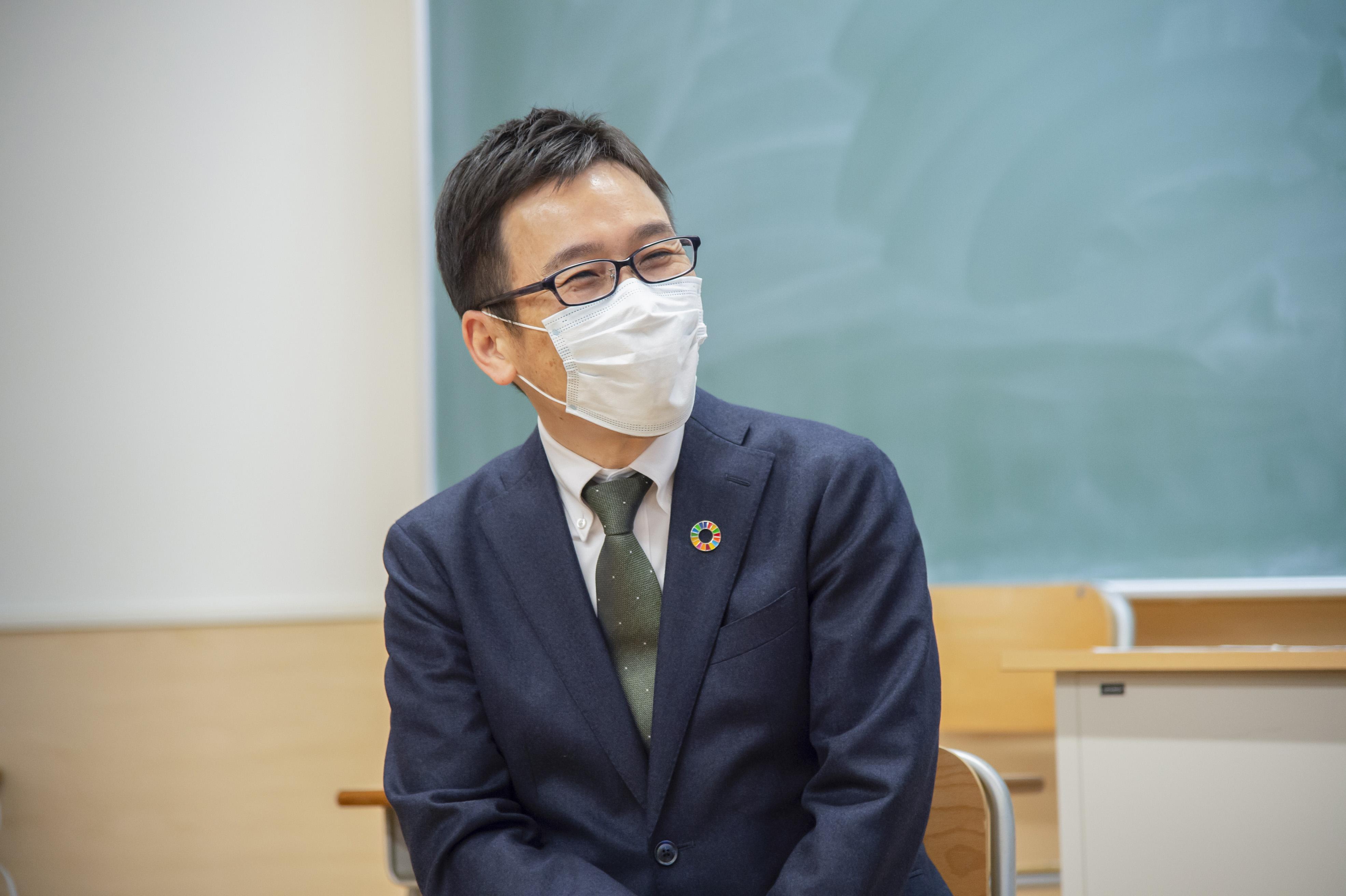
Kuwata then spoke about the relationship between Toyota and the Tohoku region.
Kuwata
President Toyoda’s aim is to create employment through manufacturing and be useful to the Tohoku region by providing ongoing “non-temporary support.” We are positioning Tohoku as a third domestic production base, not just for Toyota (to manufacture vehicles in Tohoku), but also including the companies that produce components for us.
We are also focusing efforts on HR development and we hope to make the company a place where the power of young people who seek to make improvements on their own (like the students at this school) can be further utilized.
After this interaction there was a further dialogue on the future creativity quest activities. Hearing from the students about their negotiations with local government and companies and their efforts to hold events and develop technologies, Kuwata had the following to say.
Kuwata
The school’s motto “Be Innovators” is truly something that you share in common with Toyota.
What can we do to improve things? Toyota has constantly been working to make improvements, and we must continue to do so. As the person in charge of human resources, the kind of people I would like to join Toyota is those whose aim is not simply to join the company, but rather to join the company in order to engage in something specific and goal-oriented. That is the kind of person I would like to hand the company over to in the future.
It may be an exaggeration, but I think it is a good thing for the future of Japan to have people who have received this kind of education working hard. Thinking about the local community from a young age and continuing to do so as you grow will be a tremendous source of strength in the future.
Concluding his comment, Kuwata smiled and said, “It sounds like I’m trying to promote the company.” Finally, Toyota Times reporter Morita posed one more question.
Morita
Having heard the school’s motto “Be Innovators,” and seen the various initiatives being promoted here, what do you think are the similarities with Toyota and is there anything that you could put into practice at the company?
Kuwata
Even in a large organization, unless individuals work to improve themselves the company will ultimately fail. It is important not just to do what you are told, but to think for yourself and seek to change. You could say that it’s a little like the cells in a body and it is important to ensure that all cells are activated.
Toyota is now promoting an initiative for employees to go to other companies for training. By gaining experience not only within Toyota, but also outside the company, we can broaden our horizons. I want to increase the number of these opportunities for growth.
Unless people grow, the company will not be able to achieve growth. Whether Toyota can really draw out the power of its young employees is a point that I need to work on and improve myself. In order to support and harness the vitality of the young, I would like to take back to the company what I felt here today and use it to further empower the activities of our young employees.
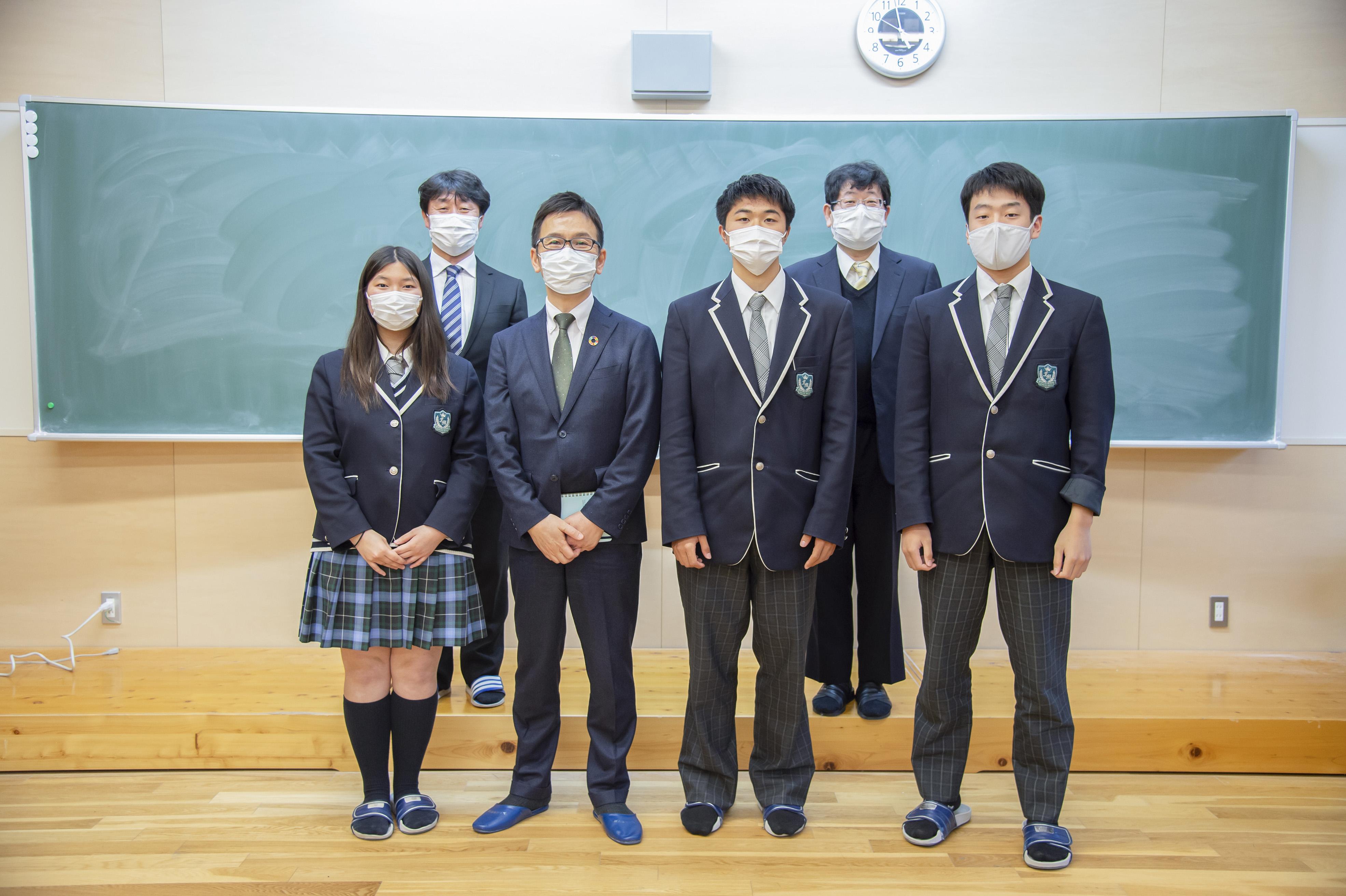
Through this visit Kuwata felt that the training dispatch program that is currently being promoted at Toyota is “really leading to growth.” He also noted that, “I want to increase opportunities for inquiry and exploration at Toyota too.” It appears that the top HR executive at Toyota has found many useful hints from the frontlines of education in Fukushima.
As noted above, Futaba Future School was established in response to the situation in which all high schools in Futaba district had closed due to the impact of the disaster. Given such a difficult situation, just having a classroom and an environment where people could take regular classes would have represented a big step forward.
However, it did not stop there. An attractive educational environment had been created that is future-oriented and respects the independence of the students. When asked about the reason for this, principal Yaginuma said, “What we do here could never have been conceived by adults alone. The biggest factor behind what has been achieved is that the children themselves expressed their own opinions about what kind of school they would like to see.”
For the children here who will become the leaders of the society of tomorrow, this school functions as a place to practice solving social challenges, and the children recognize reconstruction as an issue that directly concerns them. This engagement will truly be the major driving force for reconstruction.
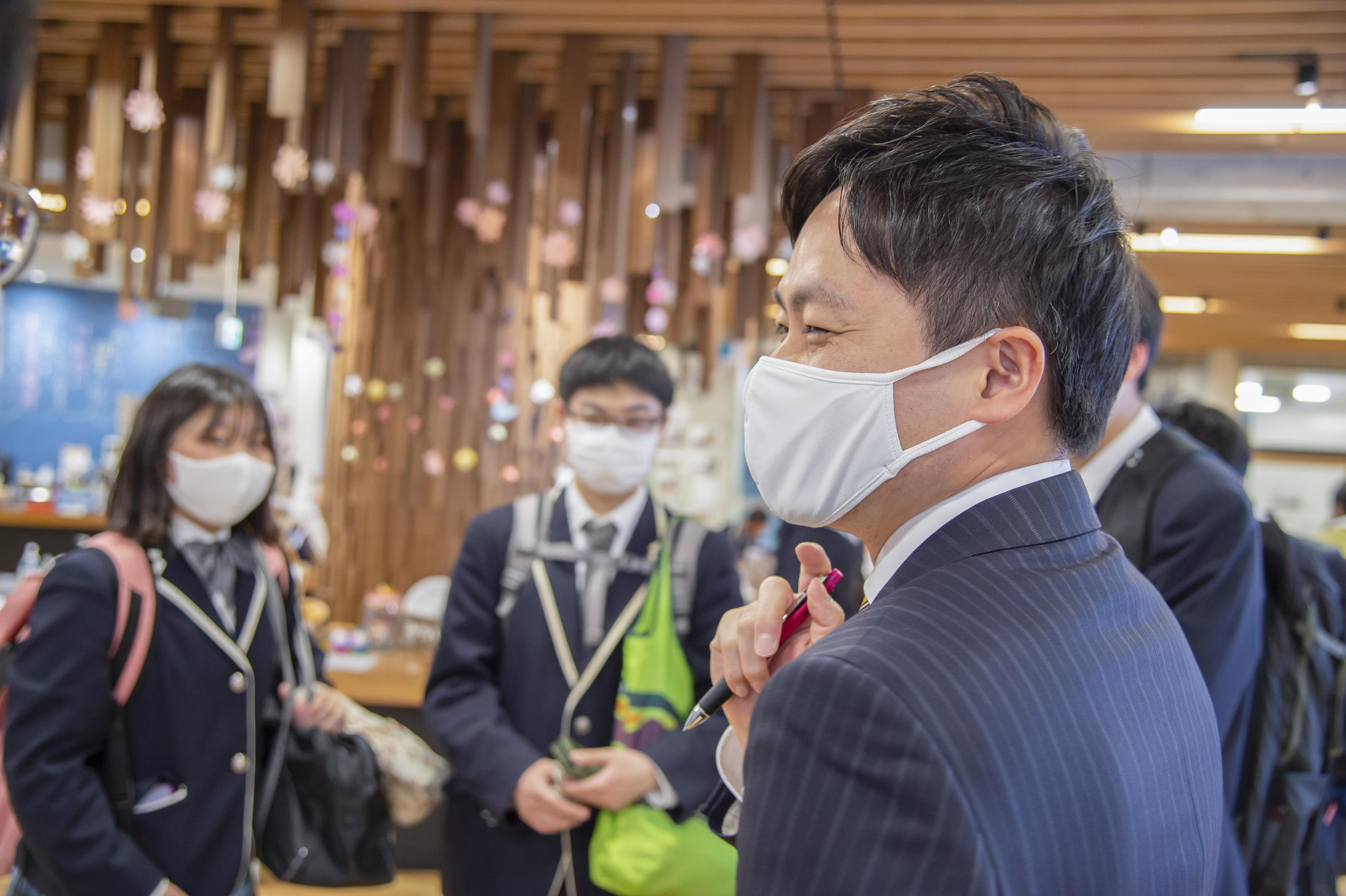
Postscript
This visit was the last in a series of visits to the Tohoku region by Toyota executive officers, which was started by President Toyoda. On each of these visits it has been possible to witness all kinds of reconstruction support and future-oriented initiatives.
Since immediately after the disaster in 2011 President Toyoda has continued to emphasize the importance of “non-temporary support” for reconstruction. Having closely followed these visits by Toyota to the Tohoku region to mark the 10th anniversary of the disaster, and through hearing the voices of local people it has been possible to realize keenly at firsthand the true meaning of the words spoken 10 years ago, that “For true reconstruction support you need to be close to people and communities” and “working with the people of the region to create the future of Tohoku together.”
Over the course of the past 10 years the people of Tohoku have steadily and surely set out a path to reconstruction and sown seeds for the future. As it moves from the past and on into the future, the relationship between Toyota and Tohoku is not a one-way street. While it may be called “reconstruction support,” you get the feeling that Toyota is also being supported by Tohoku in a big way.
The take-home message that Toyota gained from the Tohoku region on this latest visit was wide ranging, covering everything from local problems to the latest technologies that will link through to the future. Toyota will continue to grow and develop together with the region as the reconstruction phase transitions to the future-creation phase. This visit made it possible to imagine such a future.

